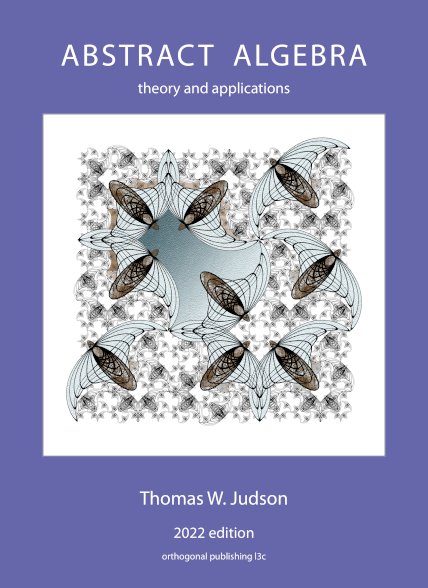Section 15.1 The Sylow Theorems
We will use what we have learned about group actions to prove the Sylow Theorems. Recall for a moment what it means for
We begin our investigation of the Sylow Theorems by examining subgroups of order
Proof.
We will use induction on the order of
We have two cases.
Case 1.
Suppose the order of one of the centralizer subgroups,
Case 2.
Suppose the order of no centralizer subgroup is divisible by
Corollary 15.2.
Example 15.3.
Let us consider the group
We are now ready to state and prove the first of the Sylow Theorems. The proof is very similar to the proof of Cauchy’s Theorem.
Theorem 15.4. First Sylow Theorem.
Proof.
We induct on the order of
First suppose that
Hence, we may assume that
A Sylow
defined by
The set
is a subgroup of
Lemma 15.5.
Proof.
Certainly
Lemma 15.6.
Proof.
We define a bijection between the conjugacy classes of
Theorem 15.7. Second Sylow Theorem.
Let
Proof.
Let
Since
Given any other Sylow
Theorem 15.8. Third Sylow Theorem.
Let
Proof.
Let
by conjugation. From the proof of the Second Sylow Theorem, the only
Now suppose that
by Lemma 15.6. But
Subsection Historical Note
Peter Ludvig Mejdell Sylow was born in 1832 in Christiania, Norway (now Oslo). After attending Christiania University, Sylow taught high school. In 1862 he obtained a temporary appointment at Christiania University. Even though his appointment was relatively brief, he influenced students such as Sophus Lie (1842–1899). Sylow had a chance at a permanent chair in 1869, but failed to obtain the appointment. In 1872, he published a 10-page paper presenting the theorems that now bear his name. Later Lie and Sylow collaborated on a new edition of Abel’s works. In 1898, a chair at Christiania University was finally created for Sylow through the efforts of his student and colleague Lie. Sylow died in 1918.

